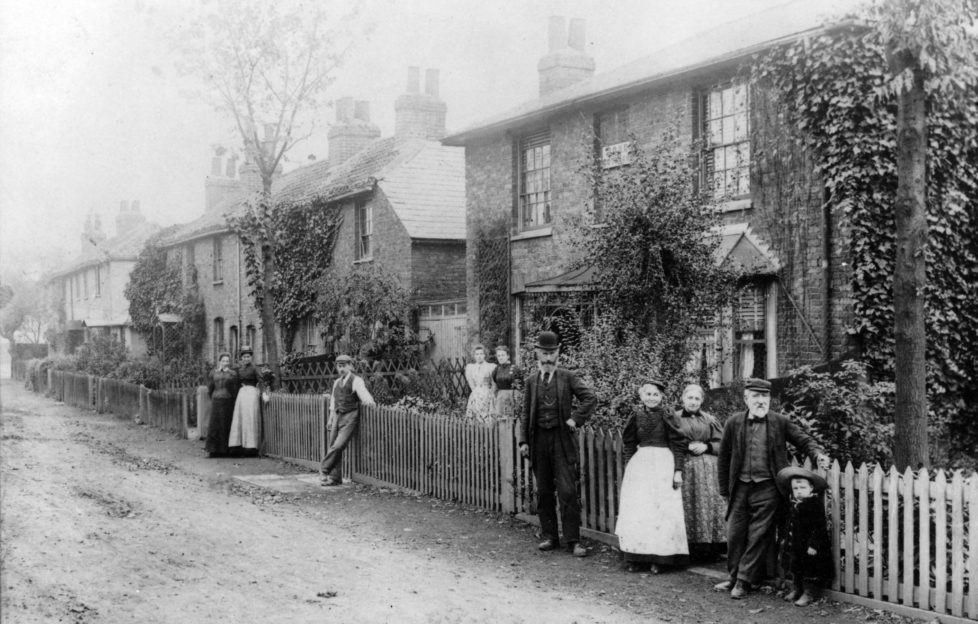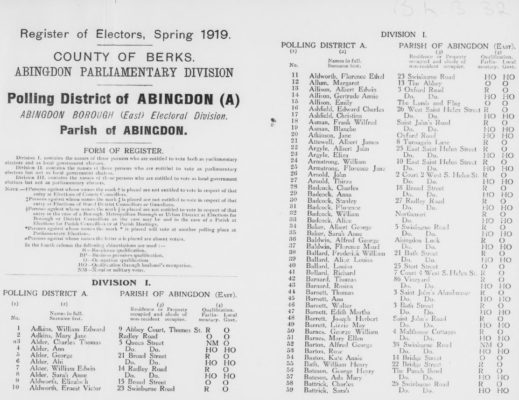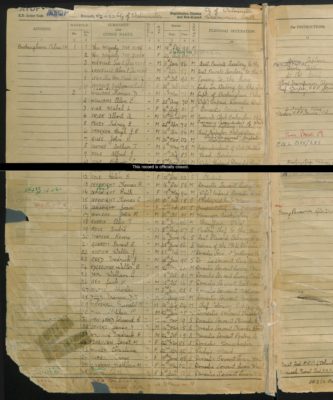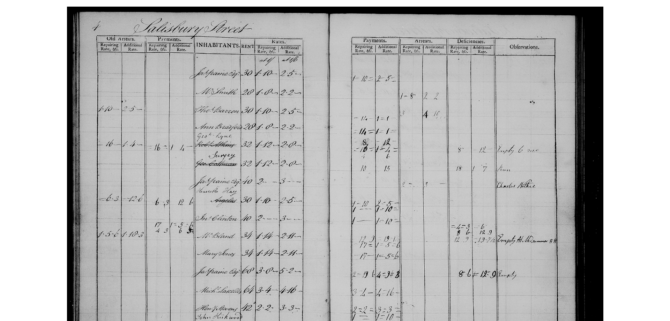Investigating The History Of Your House Pt I

If you’re interested in history, you’ve probably been watching the BBC’s “A House Through Time”.
We have — it’s been fascinating! And it got us thinking: how would we got about looking into the history of our own homes?
Luckily, our colleagues at Findmypast have the expertise to help. And their keen to share!
Getting Started
Before you begin looking into old documents, it’s usually best to establish a few key points to direct your research.
Your first step? Try to get a rough estimate of the age of your house.
You can establish this by reading up on local history, or by talking to any neighbours who have lived in the area for a long time, or other knowledgeable members of the community. Also:
- Look for visual clues. Does the style of your home give an indication of when it was built? What materials were used, and is it different to other properties on the same street? For example, you can usually identify Victorian houses by their slate roofs, bay windows, sash windows, distinctive brickwork and lack of a garage. Your house may even have the date of construction carved on a wall.
- Find out which administrative area your house is in. Knowing the names of the county, registration district and parish in which your property stands will help significantly with locating relevant records.
- Be your own archaeologist! Have you found anything interesting while working in the garden? Shards of discarded pottery and old masonry may reveal clues that predate your house.
Top tip: remember street numbering, and often street names, frequently changed over the course of time. This is especially true of the late 19th and early 20th centuries. Compare the location of your property with other buildings in the street to make sure that you are looking at the right house.
- Bear in mind that, for much of your homes history, the occupant may not have been the owner. Owning the house you live in was much rarer in the past than it is today. Up until about 1914, approximately 90 per cent of all housing in Britain was privately rented. This trend began to reverse with the 1915 Rent Act that prevented landlords from exploiting the increased wages of munitions workers.
- While most of the records you encounter will provide details on occupants, Title Registers and Deeds will provide you with key details of previous owner. This might include leases, conveyances, mortgages, and more. If you have these tucked away at home already, be sure to dig them out. If not, you can request them from solicitors and mortgage providers. In some cases, local archives and council record offices can help, too. You can also order them online from the HM Land Registry. For England and Wales, visit https://www.gov.uk/government/organisations/land-registry, search the register for free and fill in a request from. For Scotland, visit https://www.ros.gov.uk/.
Tracing occupancy online
Most family history websites will provide all the resources needed for tracing occupancy online.
Now that you have covered the basics, it’s time to turn detective and dig deeper online.

Image courtesy of Findmypast.
Electoral Rolls
These are a great starting point for finding residents of a house in more recent history.
They provide valuable information for the registered voters living in a house from the 21st century back to the 19th century.
- Electoral Rolls and Registers offer an incredibly detailed insight into not just the history of our democracy, but also the history of our homes. Remember, though, that not everyone has always been eligible to vote.
- Taken each and every year (and sometimes biannually), they are the best way of tracing occupancy between censuses.
- Individual entries can include a name, address or abode, a description of the property, and the name, a description and the residence of the landlord — or the person to whom rent was paid.
- Once you have found the address you are looking for, it is usually easy to follow it through subsequent registers to see how the occupancy changed over time. The names and details of any occupants you discover an then be used to search other records.

Image courtesy of Findmypast.
The 1939 register
The 1939 Register is one of the most important twentieth century genealogical resources for England and Wales. This is because the 1931 census was destroyed by fire, while no census was taken in 1941 because of the war.
- Once war became inevitable, the British Government had to plan for the wide-scale mobilisation of the population and the eventual introduction of rationing. The most recent census was now almost a decade old, so more up-to-date statistics were needed. They issued identity cards immediately afterwards (which were used until 1952).
- The register will tell you who was living in the property at the time and their occupation. It records the details of every household member (including visitors, boarders and servants), and the original documents often list the details of neighbouring properties. Each search result also includes three ordinance survey maps (present day, 1930s and 1880s/90s), and infographics breaking highlighting the demographics of the area.
- The government divided the register into registration boroughs, districts and counties, and can be easily searched by address.
- It also provides details for many who were involved in war work, from ambulance drivers, air raid wardens, and more.
Census records (National Archives collection available on Findmypast)
- The government takes censuses every ten years. Complete censuses for England, Wales and Scotland from 1841 up to 1911 are easily accessible online. The 1911 Scotland census is available exclusively at https://www.scotlandspeople.gov.uk/.
- Like the ’39 register, every census record includes and address. They list the name, age, birthplace and occupation of each member of a household as well as their relationship to the “head” of that household (son, wife, mother etc.)
- One of the most valuable elements is that the census records everyone in the house on census night. This includes children, servants, visitors, and lodgers, many of whom were often not recorded in other sources.
- You can easily search censuses by address. These will also include details of neighbouring properties.

Image courtesy of Findmypast.
Tax records (some available on Findmypast)
- Rate books recorded how much tax householders paid. These are really useful for finding out who occupied your house in bygone days. They can include details like the name of a house’s occupier or owner, a description of the property, and the amount paid for it.
- Hearth tax returns. You can find these online, and at the various Archives.
- Land tax records. You can still find many of these in county record offices. They tend to survive from the late 18th century through to around 1832 (although many date from earlier) because landowners used these as proof of eligibility to vote before the government introduced electoral rolls.
- Valuation Rolls are essential for Scottish research. These allow you to trace who owned property, or the name of the person who was the tenant. And, in some cases, both! Valuation rolls were local tax records which listed properties and people for each Scottish county and burgh between 1855 and 1996. (Local taxes were based upon the rental value of a property).
- Other assessed taxes on property and possession exist (such as window tax from 1696), mainly at The National Archive and other local archives.
This is part one of this guide to tracing your house’s history. Look out for part two, coming soon.
Interested in learning more about your ancestry? Click here to read Findmypast’s advice on getting started.





